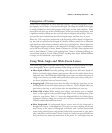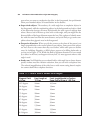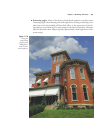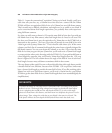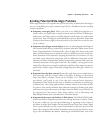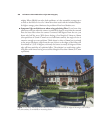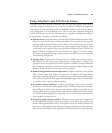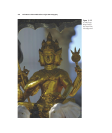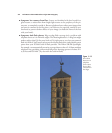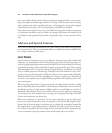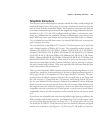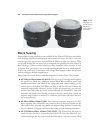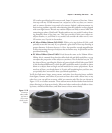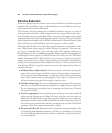Avoiding Telephoto Lens Problems
Many of the “problems” that telephoto lenses pose are really just challenges and not that
difficult to overcome. Here is a list of the seven most common picture maladies and
suggested solutions.
■ Symptom: flat faces in portraits. Head-and-shoulders portraits of humans tend
to be more flattering when a focal length of 50mm to 85mm is used. Longer focal
lengths compress the distance between features like noses and ears, making the face
look wider and flat. A wide-angle might make noses look huge and ears tiny when
you fill the frame with a face. So stick with 50mm to 85mm focal lengths, going
longer only when you’re forced to shoot from a greater distance, and wider only
when shooting three-quarters/full-length portraits, or group shots.
■ Symptom: blur due to camera shake. Use a higher shutter speed (boosting ISO
if necessary), consider an image-stabilized lens, or mount your camera on a tripod,
monopod, or brace it with some other support. Of those three solutions, only the
first will reduce blur caused by subject motion; a VR lens or tripod won’t help you
freeze a racecar in mid-lap.
■ Symptom: color fringes. Chromatic aberration is the most pernicious optical prob-
lem found in telephoto lenses. There are others, including spherical aberration,
astigmatism, coma, curvature of field, and similarly scary-sounding phenomena.
The best solution for any of these is to use a better lens that offers the proper degree
of correction, or stop down the lens to minimize the problem. But that’s not always
possible. Your second-best choice may be to correct the fringing in your favorite
RAW conversion tool or image editor. Photoshop CS5’s Lens Correction filter
(found in the Distort menu) offers sliders that minimize both red/cyan and blue/
yellow fringing.
■ Symptom: lines that curve inwards. Pincushion distortion is found in many tele-
photo lenses. You might find after a bit of testing that it is worse at certain focal
lengths with your particular zoom lens. Like chromatic aberration, it can be par-
tially corrected using tools like the correction tools built into Photoshop and
Photoshop Elements. You can see an exaggerated example in Figure 11.13; pin-
cushion distortion isn’t always this obvious.
■ Symptom: low contrast from haze or fog. When you’re photographing distant
objects, a long lens shoots through a lot more atmosphere, which generally is mud-
died up with extra haze and fog. That dirt or moisture in the atmosphere can reduce
contrast and mute colors. Some feel that a skylight or UV filter can help, but this
practice is mostly a holdover from the film days. Digital sensors are not sensitive
enough to UV light for a UV filter to have much effect. So you should be prepared
to boost contrast and color saturation in your Picture Controls menu or image edi-
tor if necessary.
Chapter 11 ■ Working with Lenses 371



